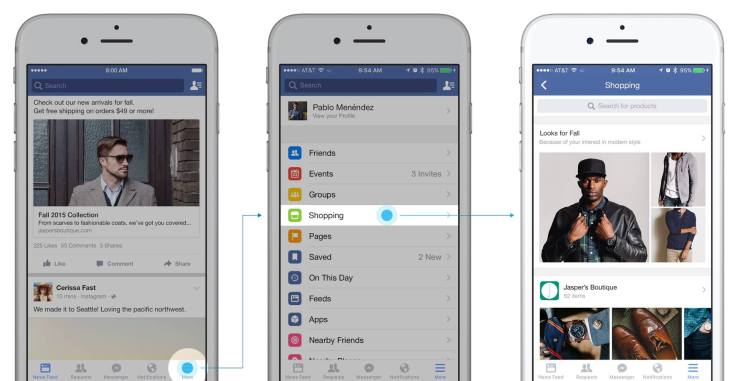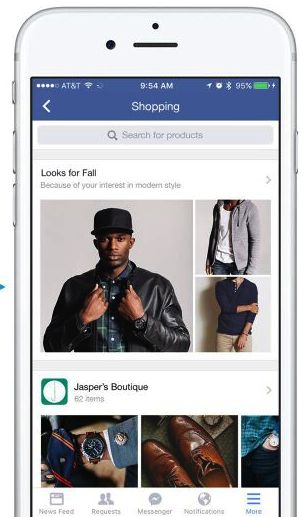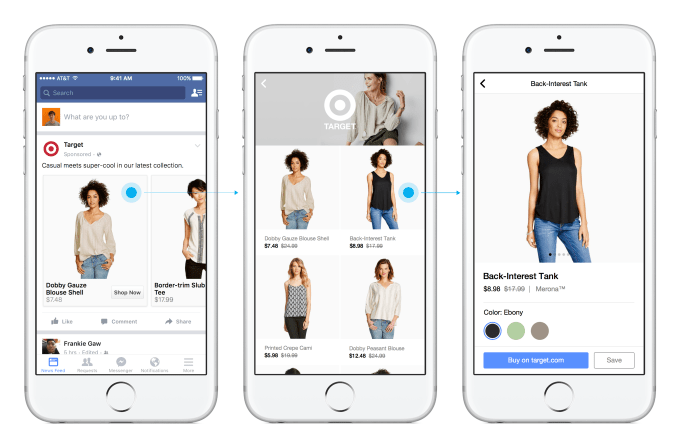
Facebook’s where people spend their time on mobile, and now it’s working on several new ways to give shopping sites a cut of the attention. The most eye-catching is a test of a Shopping feed that aggregates posts and photos about products on sale from different retailers. It’s also beefing up the fast-loading “immersive ads” it started testing last month by letting merchants host whole product catalogs on the pages that load inside Facebook instead of kicking users to a mobile browser.
 The Shopping feed test is accessible from the Favorites section of the Facebook app’s navigation menu. There you’ll be presented with a feed of products that businesses have chosen to highlight on their Pages, personalized based on things like your Facebook connections, likes and interests.
The Shopping feed test is accessible from the Favorites section of the Facebook app’s navigation menu. There you’ll be presented with a feed of products that businesses have chosen to highlight on their Pages, personalized based on things like your Facebook connections, likes and interests.
Emma Rodgers, Facebook’s product marketing lead for mobile app ads and commerce, said that like the other features the company is discussing today, this is a test being shown to just a limited number of users for now. She also suggested this is a way for the company to give users a single place to browse the different products being showcased across the social network.
The screenshot above also shows a search bar, which, in addition to giving you new ways to browse the feed, could also give Facebook new opportunities for keyword-based advertising. As Google has demonstrated, knowing that a user is searching for a specific type of product makes for a pretty enticing proposition for advertisers.

Speaking of ads, Facebook is also highlighting a new use of its Canvas ad format, one that allows users to browse different products in a fast-loading, fullscreen experience. Canvas has been compared to Facebook’s Instant Articles, and in this case, it allows users to browse different products, then zoom in and see the details on a specific one, before clicking and and being taken to the retailer’s website.
Rodgers said that this ad experience has been designed to help businesses with the shift to mobile. One of the challenges, she said, is that users may click on a product ad in Facebook, then find themselves taken to a website that doesn’t load quickly enough or hasn’t been fully optimized for smartphones.
With these ads, Facebook is “giving these marketers a post-click creative space to achieve their business objectives.” In other words, they get to create a fast, slick browsing experience for users who have already expressed an interest by clicking on their ads.

Comments
Post a Comment